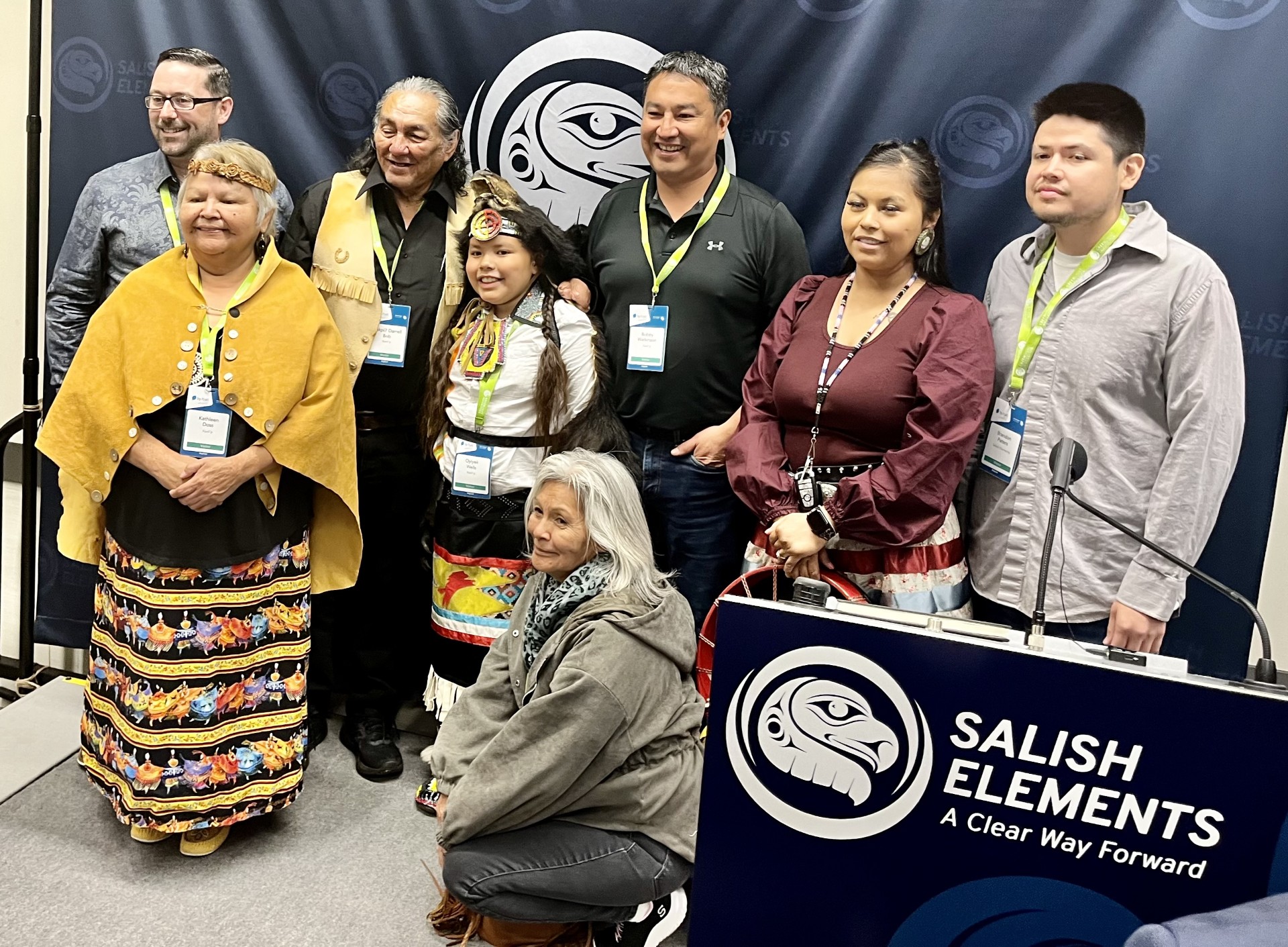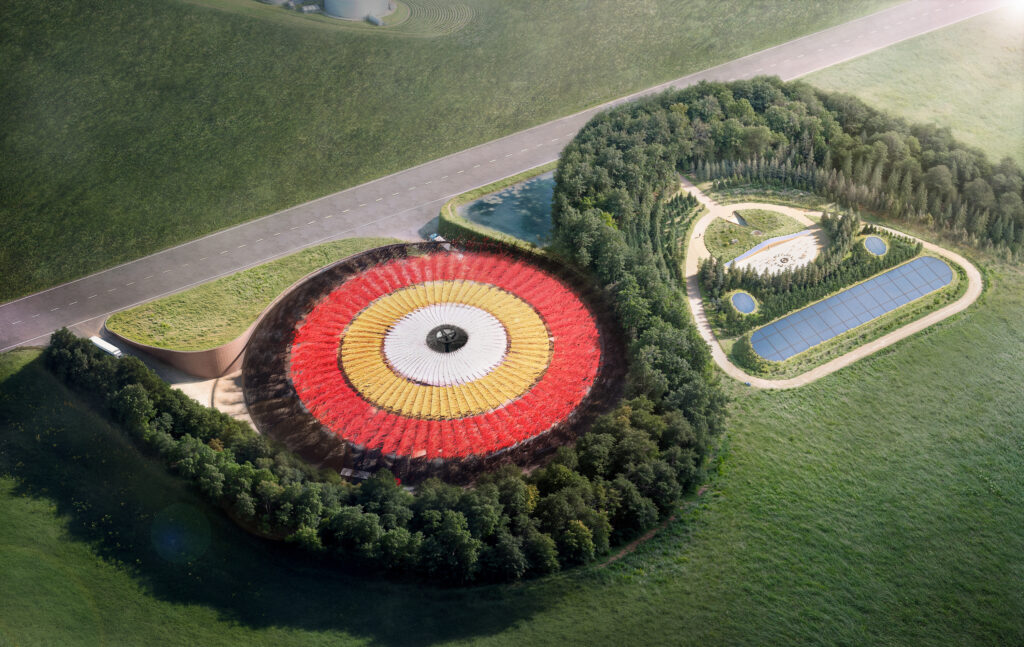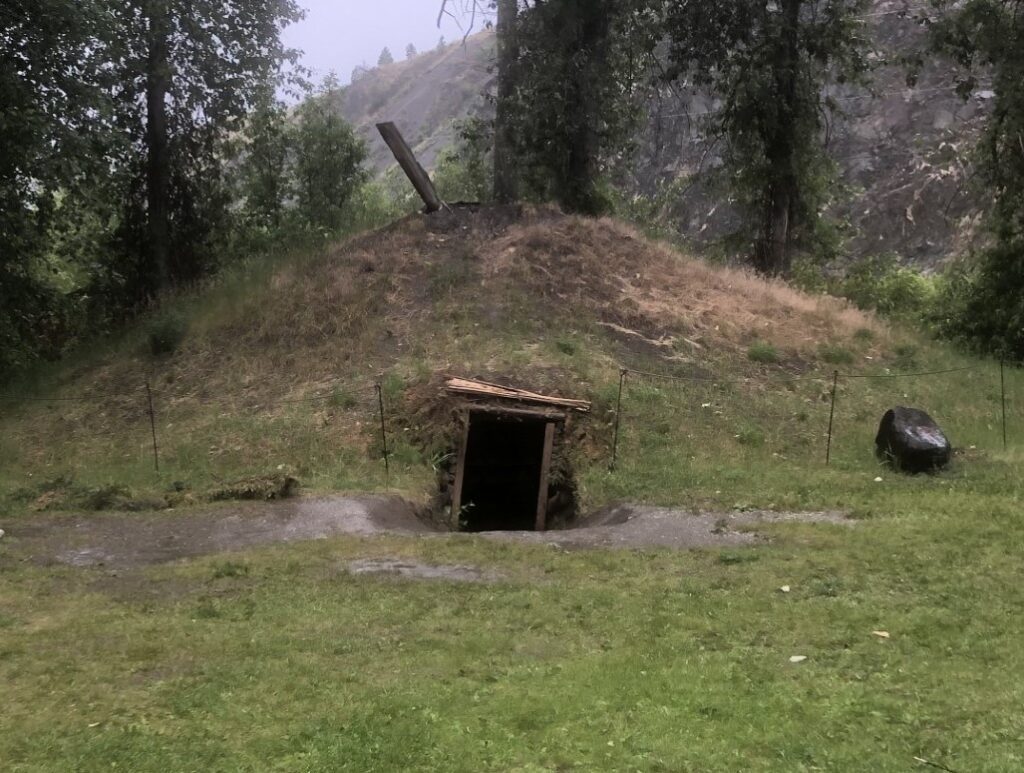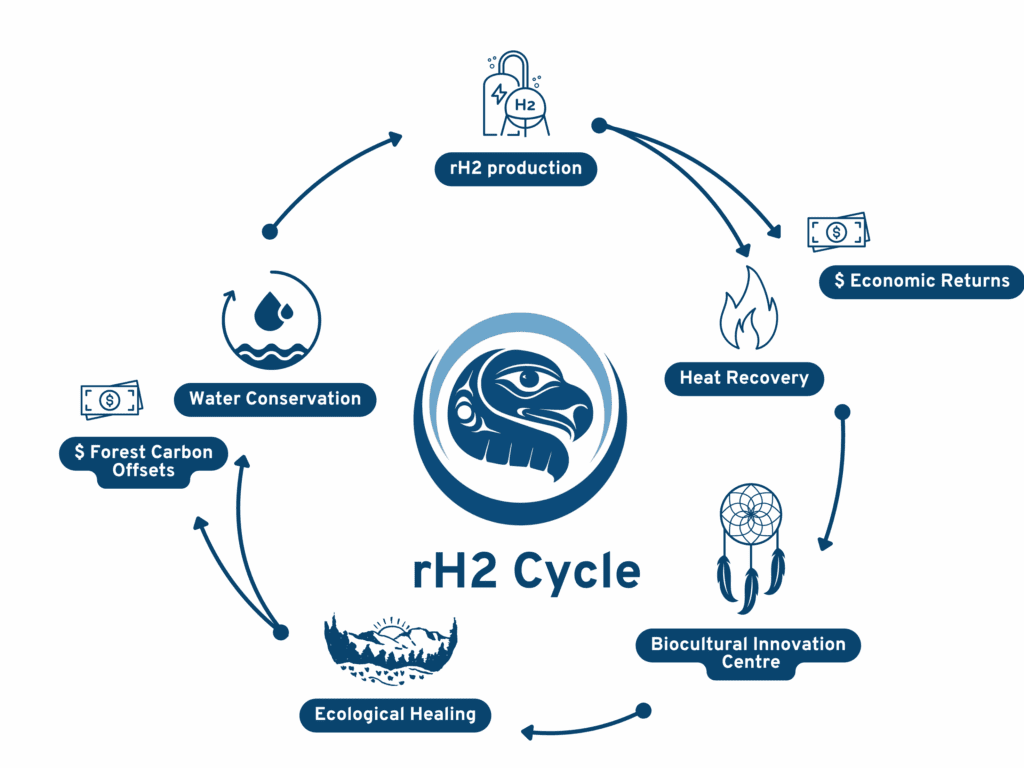The Xaxli’p community resides in the Squamish-Lillooet region of B.C. in the Fountain Valley and is one of 11 communities that make up the St’at’imc Nation. The people of Xaxli’p (Xaxli’pmec) have lived in the region since time immemorial. On June 18, 2024, representatives of Salish Elements and Xaxli’p announced a vision to build a 25MW green hydrogen production facility, 51 percent owned by the Xaxli’p, through the Xaxli’p – Salish Limited Partnership (est. Jan. 2025).
The initial production site is a first step toward regenerative hydrogen (rH2) making its way to the B.C. and North American market at a price rivaling diesel.
Kukpi7 (Chief) Darrell Bob, Working with the Water Spirit

Project Details:
Funding so far has been secured from New Relationship Trust (NRT), private investment, and a Natural Resource Canada through the Clean Fuels Funds..
Design and Construction of Energy through a Biocultural Lens
The design of the site is intended to resemble a pit-house, which is a traditional building style of St’át’imc people. This design integrates intelligent, land based building structure with the technological and engineering needs of a hydrogen utility.

Biocultural Innovation Centre – energy that gives back to lands, waters and peoples
To promote a responsible, just, and culturally grounded energy transition, Salish Elements has worked to integrate hydrogen production with traditional wisdom.
rH₂ produced through electrolysis sustains the project, while its recovered heat nurtures greenhouses within a Biocultural Innovation Centre. Guided by community knowledge and an understanding of the land’s own design – its geography, natural cycles, and living dynamics – we aim to regenerate soils impacted by human activities.

Why how we build matters
True ownership goes beyond the dollars and cents. It also includes incorporating social and cultural ownership to a project. By incorporating a pit-house design to the facility structure, we are sustaining the arid, grassy landscape while also strengthening social and cultural ties to the project – adding additional layers of ownership that can inspire curiosity, a sense of connection and greater participation in the project.
Greater still is our collective responsibility to build with life, not at a cost to life.
This design allows elements of the natural landscape to grow as part of the building and makes use of local materials which reduces environmental impacts commonly associated with new development such as imported steel and concrete.
Not Just Hydrogen
By combining traditional wisdom with thoughtful methodologies and appropriate technologies, in our model we work with natural water movement and strategic plant placement to increase soil water retention and support biodiversity. In doing so, we form patches of renewal that sustain both micro-and macro-life, allowing the landscape to breathe and ecosystems to recover.

This work is informed, directed, and approved by the community.
As vegetation establishes, soils stabilize and erosion declines, which conserves water. Healthier soils hold more moisture and support diverse plant and animal life, further increasing water availability. In parallel, forest recovery can be measured and verified
for carbon credits, creating a non-extractive revenue stream that values the land for its carbon sequestration and ecosystem health.
We at Salish Elements look forward to a future of industry that considers people and their natural surroundings and works to serve both harmoniously. Check back for further updates as we complete FEED this year and enter construction in 2026.